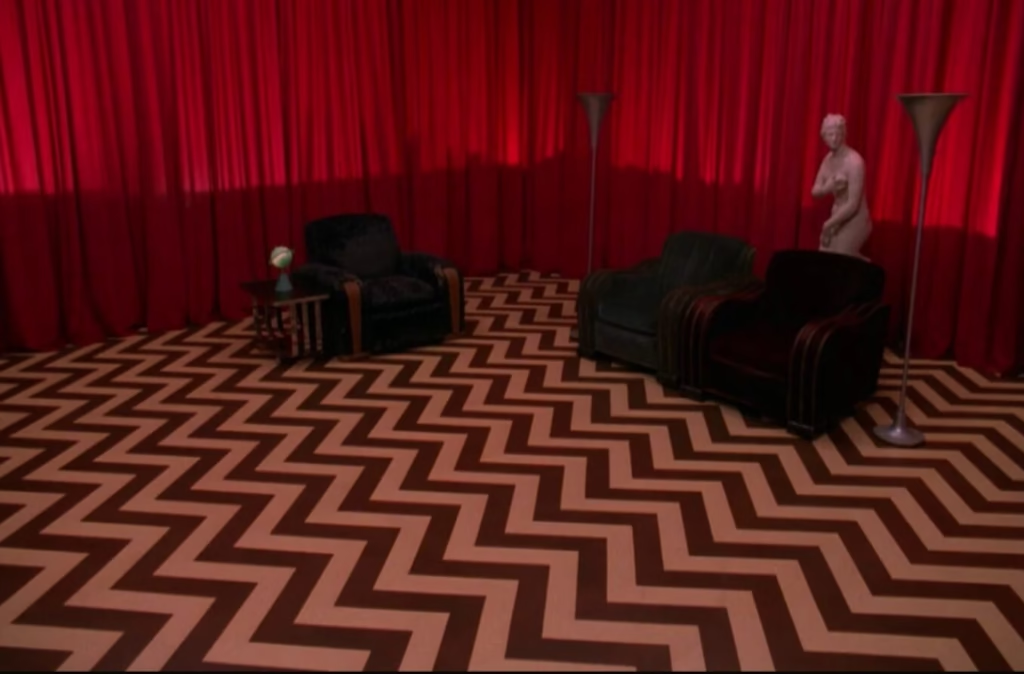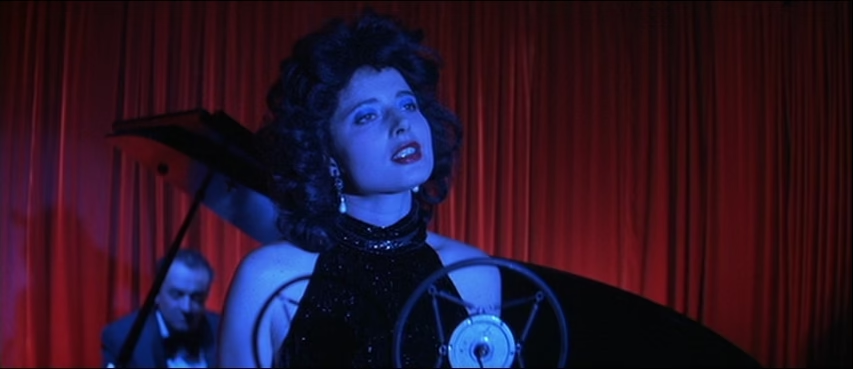Have you ever felt like the world around you is just slightly off-kilter, a familiar space suddenly warped and strange? If so, then you’ve brushed against the edges of the universe created by David Lynch. Or, perhaps more aptly, the universe he conjured from the depths of our collective dreams and nightmares. Before he was a director, he was a sorcerer. This is the fifth installment of our ongoing “Pop Culture UFOs” series, where we shine a light on figures whose creative visions defy easy categorization.

Unfortunately, he passed away last week.
David Lynch wasn’t simply a filmmaker; he was a cultural anomaly, an artist whose work operates on a different plane of existence. While many directors strive to capture reality, Lynch sought to unearth the surreal, the unsettling, the profoundly strange that bubbles beneath the surface of our everyday lives. He was not one to follow the beaten path, making him less of a cultural figure, but instead a conduit to other worlds. He was an enigma wrapped in a mystery, served on a plate of red velvet.

This post delves into the extraordinary career of David Lynch, exploring his utterly original approach to art, his signature “Lynchian” style, and the indelible mark he has left on the world of creative expression. Today, we look not at the man, but at the legacy he left behind, so that his work may continue to inspire generations to come.
We will examine the elements of his unique visual and auditory style, his thematic obsessions, his rejection of conventional narrative structures, key moments from his career, and the impact his work had on the cinematic landscape.
1. The Lynchian Universe: Unpacking the Uniqueness
The “Lynchian” aesthetic is an immersive, often disorienting experience. It’s a cocktail of:
- Surrealism and Dream Logic: Like a dream, his films often defy conventional logic, using symbolism and fragmented imagery to convey deeper meanings that often linger in the subconscious. The viewer is not a passenger but an interpreter.
- Atmospheric Tension and Unease: Lynch masterfully builds suspense through unsettling sound design, ominous visuals, and characters that often operate on a knife’s edge, generating an almost palpable sense of dread.
- Recurring Motifs: We see patterns in his work. The Red Room in Twin Peaks, distorted faces and slow-motion in much of his repertoire, become visual touchstones. They are familiar but never comfortable.
- Sound Design: Lynch’s use of sound design is nothing short of symphonic. The distorted industrial drones, ominous rumblings, and unsettling ambient sounds add layers to his stories, creating a sonic landscape as vital as his visuals.
- Blending the Mundane with the Absurd: This is perhaps his greatest trick. Lynch juxtaposes ordinary settings – a suburban neighborhood, a diner – with jarringly surreal elements, exposing the strangeness within the commonplace.
For example, the slow-motion, otherworldly sequences in Twin Peaks juxtaposed with the everyday life of a small town or the unsettling industrial ambiance and grotesque imagery of Eraserhead.
Thematic Obsessions
Recurring themes in Lynch’s work include:
- The Duality of Good and Evil: Characters are often torn between their light and dark sides, exposing the inherent moral ambiguity in humanity. Blue Velvet perfectly exemplifies this with its sinister underbelly of suburban life.
- The Darkness Beneath the Surface: The façade of normalcy often masks hidden secrets, corruption, and unsettling desires. This is prominent in much of his work, most notably in the secrets and moral decay in Twin Peaks.
- The Power of Dreams and the Subconscious: Dreams are not just fleeting images, but portals to deeper truths. The subconscious is not an enemy, but a collaborator. Lynch invites us to find meaning and truth in these dream states, and Mulholland Drive is a perfect example.
- The Nature of Identity and Reality: Characters often question their own identities and the nature of their reality. Characters often switch identities, blurring lines between self and persona and questioning the nature of our existence, notably in Inland Empire.
Rejecting Conventional Narrative:
Lynch’s storytelling is as far from conventional as one can get. He employs:
- Fragmented Plots and Non-Linear Narratives: He eschews the traditional three-act structure, opting instead for a fractured, dreamlike progression. Time often bends and warps to the tune of emotions and the subconscious.
- Open-Ended Conclusions: He leaves questions unanswered, encouraging audience participation, not resolution. We are forced to do our own interpreting and create our own conclusions.
- Emphasis on Mood and Atmosphere Over Plot: Narrative takes a backseat to the immersive experience, prioritizing atmosphere over a coherent storyline. As viewers, we need to trust the senses rather than our logic.
While challenging, this approach is profoundly rewarding, inviting viewers to engage actively and emotionally with his work.

Lynch’s Artistic DNA
Lynch’s work is infused by:
- Surrealist Art and Film: He draws heavily from the works of surrealist artists like Salvador Dali and filmmakers like Luis Buñuel. His work shares their disregard for conventional logic.
- Abstract Expressionism: His works often convey a sense of raw emotion and are filled with abstract imagery, similar to the abstract expressionist movement.
- American Noir and Pulp Fiction: The dark, shadowy worlds, femme fatales, and morally ambiguous characters of film noir and pulp fiction resonate in Lynch’s work, like Blue Velvet, adding to the undercurrent of uneasiness.
- The Subconscious Mind and Dream States: Lynch uses his understanding of the subconscious to craft an immersive dreamlike experience for the viewer, one that speaks to our most primal instincts.
2. A Career Kaleidoscope: Key Works and Curiosities
Early Experiments: The Foundation (Eraserhead)
His debut, Eraserhead, is a bizarre, haunting masterpiece, a black-and-white nightmare fueled by anxiety and industrial decay. Its themes of isolation, fear of parenthood, and the grotesque are conveyed through unforgettable, unsettling imagery. This film was an experimental statement that pushed the boundaries of what independent cinema could be.

Mainstream for the Strange (The Elephant Man, Dune)
The Elephant Man saw Lynch adapt his style to a more conventional narrative while retaining his unique sensibility. It’s a deeply moving story of compassion set against a cruel world, but he retains his surreal elements. Dune, however, presented a challenge. The ambitious adaptation of Frank Herbert’s novel was a struggle, showcasing Lynch’s difficulty adapting to pre-defined narrative expectations.
The Blue Velvet Shift: Defining a Style
Blue Velvet solidified the “Lynchian” style, diving headfirst into the darkness lurking beneath the placid surface of suburban life. Its blend of noir, surrealism, and unsettling violence established Lynch as a master of psychological unease. The film became a blueprint of his style for years to come.

Television Transcends: Twin Peaks
Twin Peaks became a cultural phenomenon that revolutionized television. It blended the conventions of soap opera, mystery, and surrealism to create an experience that was both captivating and confounding, proving that art could and should exist in this medium. It shattered the rules of television and opened doors for other creators to push their boundaries.

Deep Dive: Mulholland Drive and Inland Empire
Mulholland Drive and Inland Empire represent the more complex, abstract side of Lynch’s filmography. These films are puzzles layered within dreams, exploring themes of identity, illusion, and the seductive yet cruel world of Hollywood. They’re like a labyrinth you willingly get lost in.
Mullholand drive on Prime Video, Available for rent or buy
Beyond Film and TV: Music, Painting, and More
Lynch’s creativity extends beyond film. His music albums, such as “Crazy Clown Time,” mirror his filmic style. His paintings and other visual art pieces are filled with strange, evocative imagery. His interest in Transcendental Meditation and his foray into the world of coffee all showcase his multifaceted nature.

3. Lynch’s Legacy: The Impact on the World of Creation
Influence on Filmmakers
Lynch’s influence is undeniable, with countless filmmakers drawing inspiration from his style. Directors like Quentin Tarantino, Christopher Nolan, and Nicolas Winding have all cited Lynch as an influence, incorporating elements of his dreamlike visuals, unsettling atmosphere, and rejection of conventional storytelling. He paved the way for filmmakers to embrace their own unique voice.
Inspiring Artists Across Mediums
His impact can be felt in other artistic mediums:
- Music Videos: Music videos by artists like Radiohead and Marilyn Manson showcase elements of his surreal and often unsettling visual style.
- Visual Art: His use of surreal imagery and layered symbolism has inspired many painters, sculptors, and other visual artists.
- Literature: Writers have cited his work as an influence in their own explorations of the subconscious, blurring the lines between reality and dreams.
The Importance of Originality
Lynch’s uncompromising commitment to his vision highlights the importance of originality. He encourages creators to embrace their unique voice and push the boundaries of creative expression. He was not a follower, but a leader. His work serves as an example of how staying true to your own unique perspective can lead to groundbreaking and memorable art.
The Ongoing Mystery of Lynch
David Lynch continues to fascinate and confound. His films are not puzzles to be solved, but experiences to be felt. His work encourages questions: What is reality? What lies beneath the surface? What do our dreams mean? His legacy is one of constant questioning, pushing us to seek meaning in the bizarre, and reminding us that the most interesting answers often come from the strangest places.
A Lingering Aftertaste
David Lynch was more than just a filmmaker; he was a cultural phenomenon. His career was defined by his unwavering originality, his unique “Lynchian” style, and his profound impact on the world of art. Through his unsettling visuals, dreamlike narratives, and thematic explorations, he redefined cinema and inspired countless artists across mediums.
Perhaps the most fitting tribute to David Lynch is not to try to understand, but to feel. To let his work wash over us, like a dream that we can’t quite remember, but know we’ll never forget. His art doesn’t offer easy answers; it asks profound questions.
If you haven’t yet experienced the world of David Lynch, I encourage you to start with Eraserhead and Twin Peaks. Share your own interpretations in the comments below. What does David Lynch’s legacy mean to you? What part of his surreal universe resonates the most?
Pop Culture UFO series
- Pop Culture UFO’s 1: Celebrating William Onyeabor, a pioneer of Nigerian Funk and Electronica.
- Pop Culture UFO’s 2: Alan Vega, The Revolutionary Force Behind Suicide.
- Pop Culture UFOs 3: Piero Umiliani, The Godfather of the Cocktail Generation.
- Pop Culture UFO’s 4: Chris Korda
- Pop Culture UFO’s 5: David Lynch and his Unique Legacy
- To be continued…

Leave a Reply